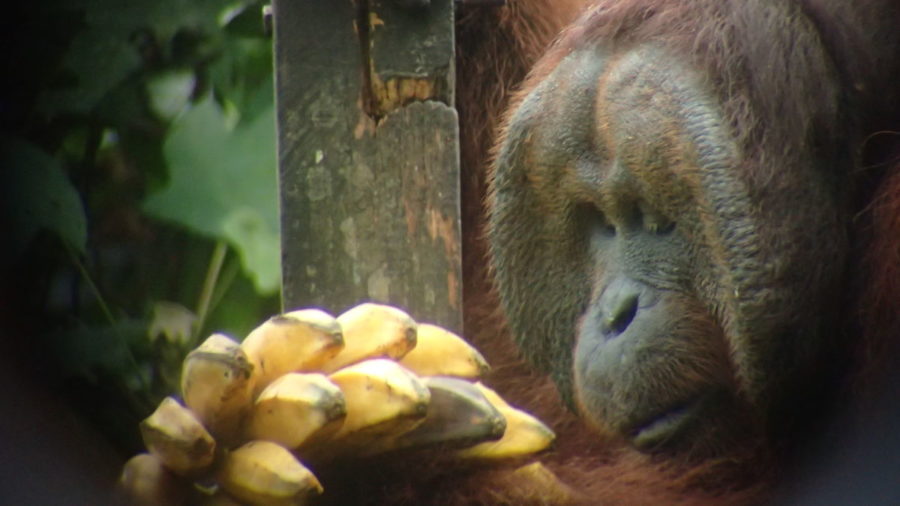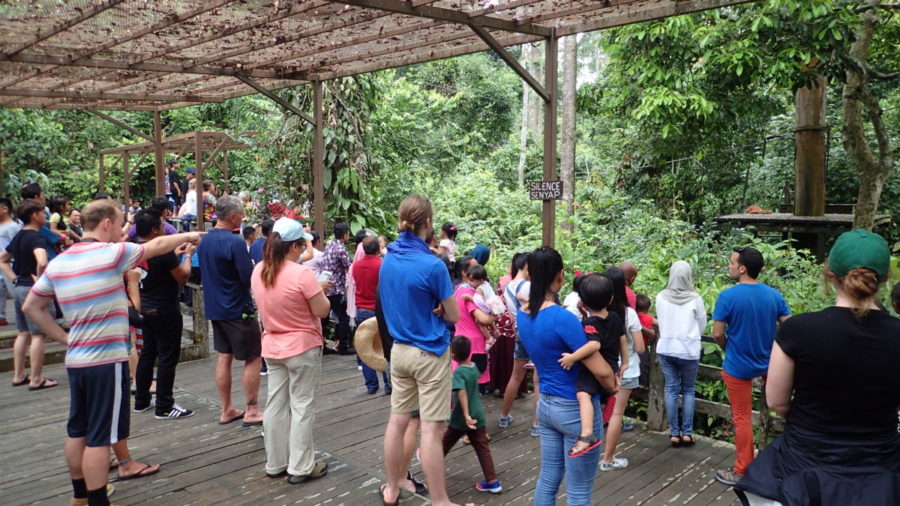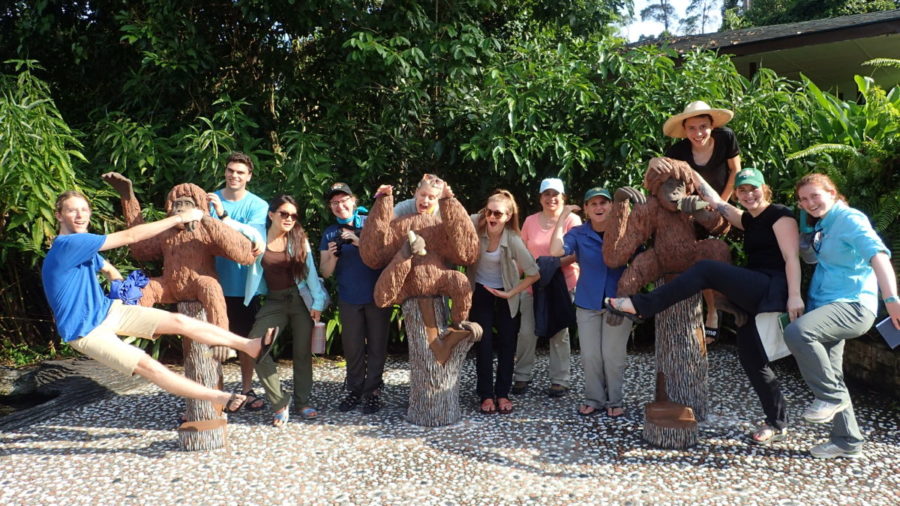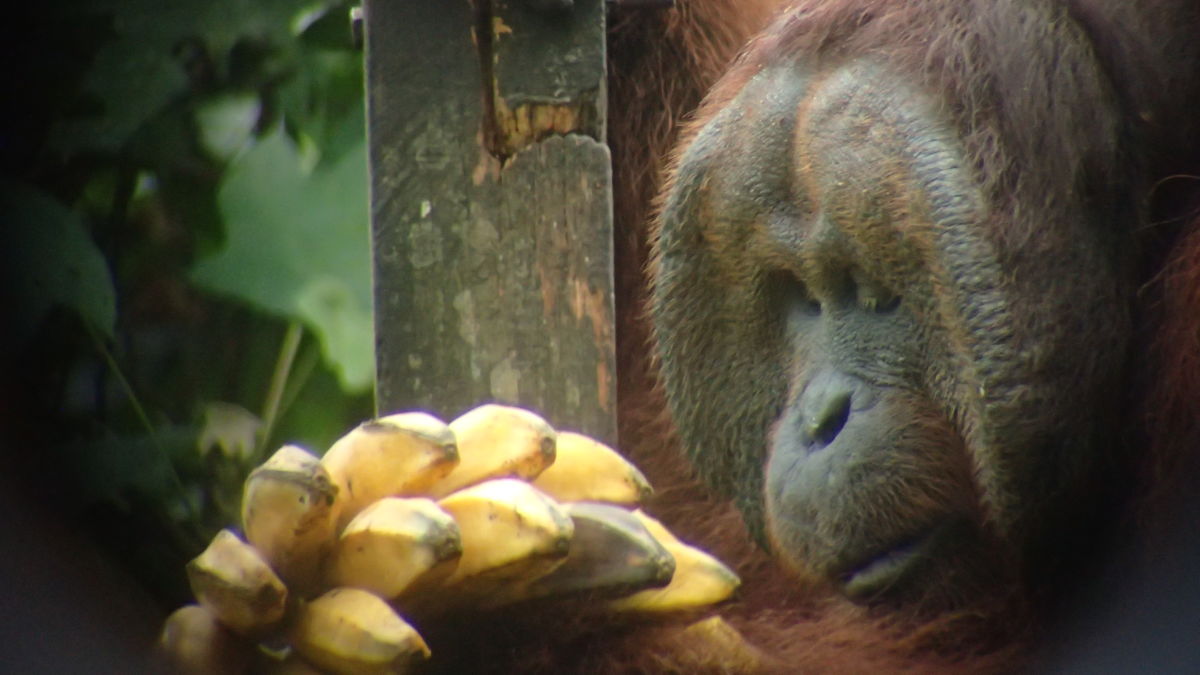Day 2 – Wildlife Ecotourism
Welcome to Sepilok – Salamat Pagi ! (Good Morning! in Malay) It’s day 2 and the TRE Borneo class is off to an amazing start viewing some of the endemic wildlife. Our group visited the Sepilok Orangutan Rehabilitation Centre. The center was found in 1964 in the State of Sabah, Malaysia, Borneo in an attempt to help foster, protect and care for these beautiful primates.
The “Man of the Forest” is the title of the short info documentary we watched before entering the area where a visitor can view the orangutan in a natural habitat. The word orangutan translated to the man in the forest in Malay. Our group taxied to the orangutan sanctuary to experience these magnificent endemic creatures of the Borneo forests.

The orangutan cries and sounds signals his fellow orangutans. In the deep and lush sanctuary I hear the rumble of the on coming storm in the background; its crackles signal rain. The birds sing and thunder rolls. A male climbs to the platform and walks the rope and a larger orangutan sits on the platform stairs as the visitors gather and stare. It’s their chance to tell a story about how they saw an orangutan in the wild, or at least in Sepilok, on a wooden platform.
Senyap is Malay for silence. The wooden sign is positioned squarely on the post. Babies and children look on with their mother and father. The smaller orangutan joins the larger male by lying down next to him lifting his head and dropping it rhythmically. The larger male turns around and stares at the crowd of human onlookers. A worker is nearby the platform with a rattan basket on his back. His engagement is limited as he leaves a hand of bananas and other tropical greenery.
The air is sticky and the rumbling of inclement weather approaches. We wait for something monumental to occur. What will they do next? I’m sure they feel imposed upon. Those of us watching them with curiosity, yet this place feels zoo-like.

A third primate join their party, a macaque who’s not welcomed. Confrontation begins as the larger orangutan chases the intruder off the platform.
Clamors of Malay words, and hushing sounds fill the air. The crowd waits in stillness, anticipating that our sumo-size friend turns around. People of all cultures take selfies and focus on the story they will post to FB, twitter, Instagram or another social platform.
It’s 3:22 pm and the crowd has thinned. Impatience and boredom signals their departure from the observation platform. I take personal pleasure as I observe the pair of orangutans quiet exchange. I wonder – where’s our rain ?
Here are some facts that I learned about the Orangutan that you may find interesting:
1) The Borneo orangutan is one of the two great apes in Asia.
2) According to author Elizabeth Bennett, “he is the most arboreal and least sociable”.
3) Males are 2 times larger than females.
4) The males have a large throat pouch containing air sacs. This enables him to produce long calls.
5) They are our closest primate relative and shares 96.4% of our genes.
6) The Malay word for orangutan is mawas.
7) They live in the canopy forest above the forest floor.
8) They consume 100s of fruit a day with figs and durians being a favorite.
9) Organutans have close social bonds.
10) Their scientific name is Pongo pymaeus, and they are an endemic species.

Lastly, the orangutan is threatened as their natural habitat, the tropical rainforest is shrinking due to the expansion of the palm oil industry in Sumatra and Borneo. I am hopeful that we’ll observe orangutans in the wild at the Tungog Rainforest Ecocamp during my visit. I have mixed emotions about what this sanctuary represents. How does the place support a positive ecotourism experience ? This visit is a necessary component of our trip as it provides a contrasting experience of what we might observe and experience in the ecocamp this week.
~ Nancy Mora-Rogers

